It’s that time of year again: fall is coming, and it’s a prime pool-closing season.
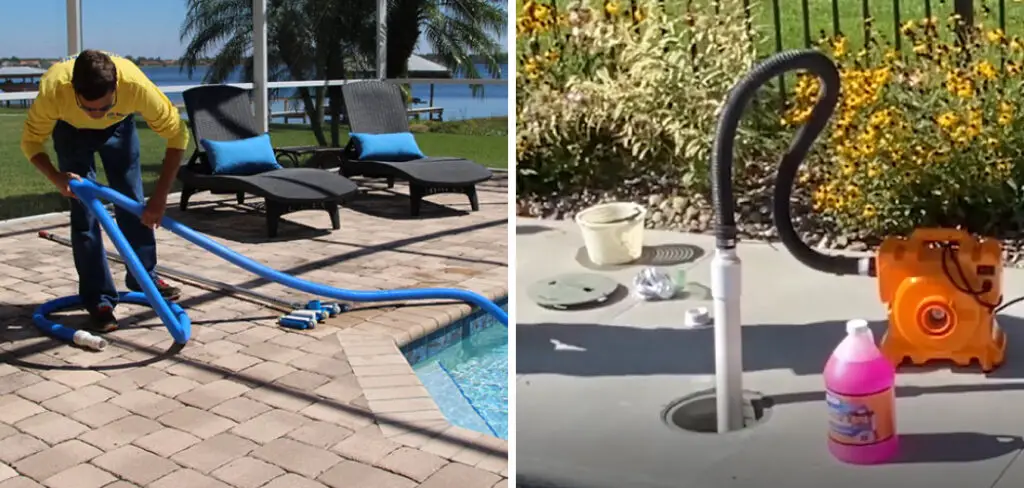
To make sure your inground swimming pool is taken care of for the winter months, one of the most important steps you’ll need to take before you close up shop for a few months is to blow out your inground pool lines.
Doing so will prevent any water from freezing in them over the winter, which could lead to disastrous consequences come springtime.
If this sounds intimidating – don’t worry! Blowing out an inground pool line doesn’t have to be hard; with a little guidance and preparation, you can have it done quickly, easily, and correctly. In today’s post, we’ll go through all that goes into on how to blow out inground pool lines properly, so you’re confident in tackling this task each season!
Why Blowing Out Inground Pool Lines is Necessary?
Before we get into how to blow out an inground pool line, it’s important to understand why this task is necessary.
The primary purpose of blowing out an inground pool line is to remove all the water from the lines so that they don’t freeze over when the temperature drops during the winter months.
When water freezes, it expands, which can cause cracks and breaks in pipes, fittings, and other pool equipment. This can be extremely costly to repair once the weather gets warmer again!
Required Tools and Materials
Before you start the job of blowing out your inground pool lines, it’s important to make sure you have all the necessary tools and materials. You’ll need
- A compressor or air blower that is rated at least 3 horsepower
- An air compressor hose
- A few rags or towels.
- Safety glasses
- Gloves
10 Steps on How to Blow Out Inground Pool Lines
Once all the necessary tools and materials have been gathered, it’s time to get started with the actual process of blowing out your inground pool lines. Here is a step-by-step guide.
Step 1: Turn Off Your Pool Pump
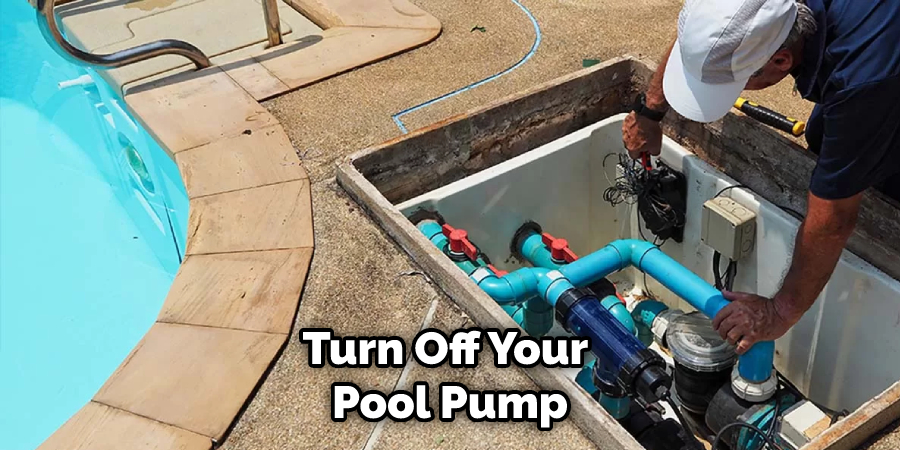
The first step is to turn off your pool pump and unplug it from its power source. This will ensure that no water is circulated through the lines during the blowing-out process. Water may still be in the pipes, but it won’t be moving.
Step 2: Locate and Isolate Pool Valves
The next step is to locate and isolate all pool valves that lead to the inground pool lines. This will prevent any air from escaping or entering from these points during the process of blowing out the lines.
Step 3: Remove All Pool Plugs
Once the valves have been isolated, you will need to remove any plugs or caps from the various pipes and fittings that make up the inground pool line system. This includes skimmer baskets, return jets, main drains, and any other attachment points in the pool.
Step 4: Connect the Air Compressor
Once all the plugs and caps have been removed, you can connect your air compressor or blower to the pool line system. You will need to use an air hose that is rated for 3 horsepower or more in order to provide adequate pressure for blowing out the lines.
Step 5: Begin Blowing Out the Lines
Now that everything is all setup, you can begin blowing out the pool lines. Start at the highest point (usually near a skimmer basket) and work your way down to lower points in the system. You should hear air being expelled as you go, which means water is being pushed out of each pipe and fitting.
Step 6: Check for Blockages
As you work your way through the pool lines, periodically check for blockages or obstructions that might be present. This is especially important if you have trees or shrubs around your property, as leaves and other debris can get stuck in the pipes during the fall season. If a blockage is present, use a rod or other tool to remove it.
Step 7: Continue Blowing Out the Lines
Once all blockages have been cleared, and all lines have been blown out, you can move on to the next section of your inground pool line system. Again, start at the highest point and work your way down until all the lines have been completely drained of water.
Step 8: Check Pool Equipment
Once all the pool lines have been blown out, it’s time to check your pool equipment for any remaining water. This includes any pumps, filters, and other attachments that you might have in your system. If there is still water present, use a rag or towel to soak it up.
Step 9: Add Winterizing Chemicals
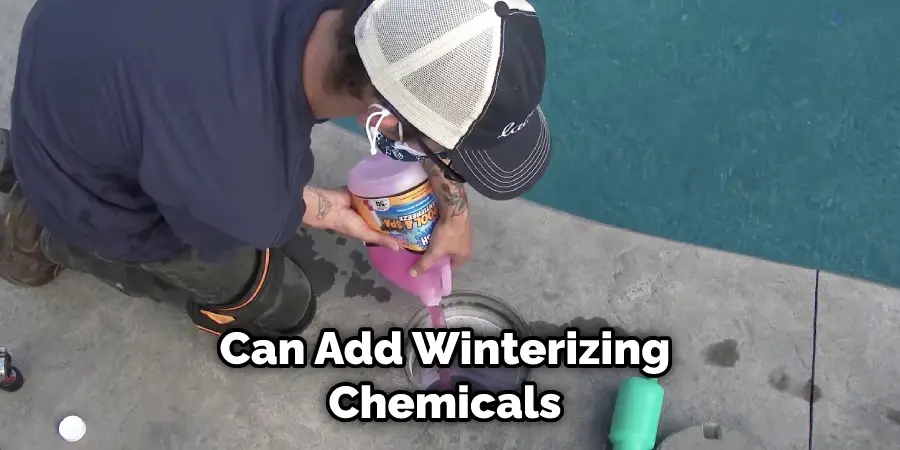
Once all the water has been removed from the pool lines and equipment, you can add winterizing chemicals that are designed to help protect your system from freeze damage. Follow the directions on the product label for the best results.
Step 10: Re-Install Pool Plugs
The last step is to re-install all the plugs and caps that you had removed from the pool lines earlier. This will prevent any air or water from entering or exiting the system, which can be dangerous in colder climates. Once they are securely in place, you’re done!
Once you’ve followed these steps, your inground pool lines should be properly blown out and ready for the winter season. With a little bit of effort and patience, you can protect your pool water system from freeze damage so that it will be good to go next spring.
8 Safety Precautions to Take
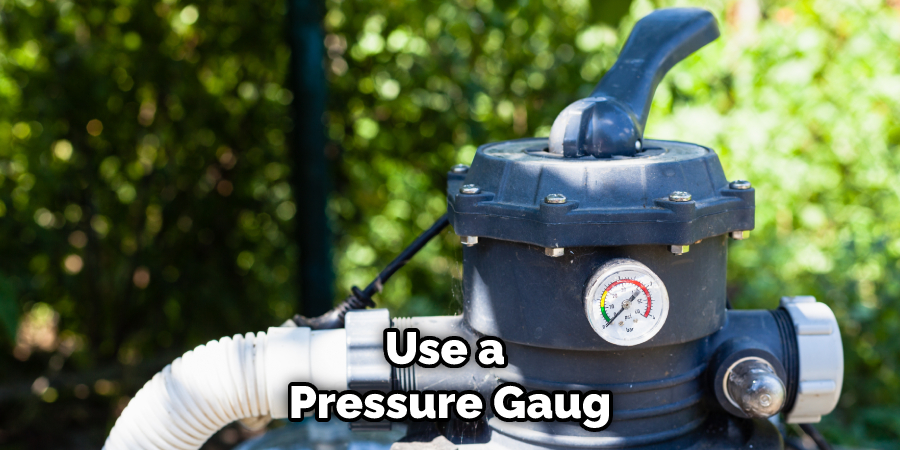
- Make sure the power to your pool pump, and filter is turned off. You do not want to be shocked while working. It is an important safety precaution. Keep in mind that if your pool has a gas heater, it must be disconnected first.
- Use a pressure gauge on the air compressor or blower to ensure that it does not exceed 80 PSI. Too much pressure could cause damage or injury, so you’ll want to be careful when using this equipment.
- Wear eye protection while using an air compressor or blower to blow out the lines. The air pressure could cause debris and water to spray, potentially causing injury.
- When using an electric blower, make sure it is rated for outdoor use and that you have a ground fault circuit interrupter (GFCI) in place. This will help prevent electric shock if the blower becomes wet.
- Use a length of heavy-duty garden hose to connect the air compressor or blower to the skimmer and main drain lines. Make sure that the connection is secure and that there are no leaks.
- Put a woven plastic bag over the end of the garden hose to prevent debris from entering the lines. Otherwise, it may become clogged in the line. The plastic bag should be removed before starting the compressor or blower.
- When using a submersible pump to blow out the lines, make sure that it is rated for outdoor use and that the area is well-ventilated. Submersible pumps can create dangerous gases if used indoors without proper ventilation.
- Follow all of the manufacturer’s instructions when using the air compressor or blower. This will help ensure that you do the job properly and safely. The instruction manual will also provide you with other safety tips.
Following these safety precautions when blowing out inground pool lines will help keep you safe and ensure that the job is done properly. Be sure to always read and follow the manufacturer’s instructions for the best results. Also, make sure to turn off the power to the pool pump and filter before beginning. Taking these simple steps can help ensure a safe and successful result.
Cost of Blowing Out Inground Pool Lines
The cost of blowing out pool lines can vary depending on the size of the pool, the type of equipment being used, and other factors. Generally speaking, most homeowners will pay anywhere from $50 to $150 for a professional to blow out their inground pool lines.
This cost may be higher if you need additional services, such as winterizing the pool, or if you require specific equipment. It is important to contact a local pool professional for an accurate estimate.
For those who wish to do it themselves, the cost of purchasing the necessary equipment, such as an air compressor or blower, can range from $150 to $500, depending on the size and quality of the machine. The cost of any additional parts or supplies needed, such as garden hoses and plastic bags should also be taken into consideration.
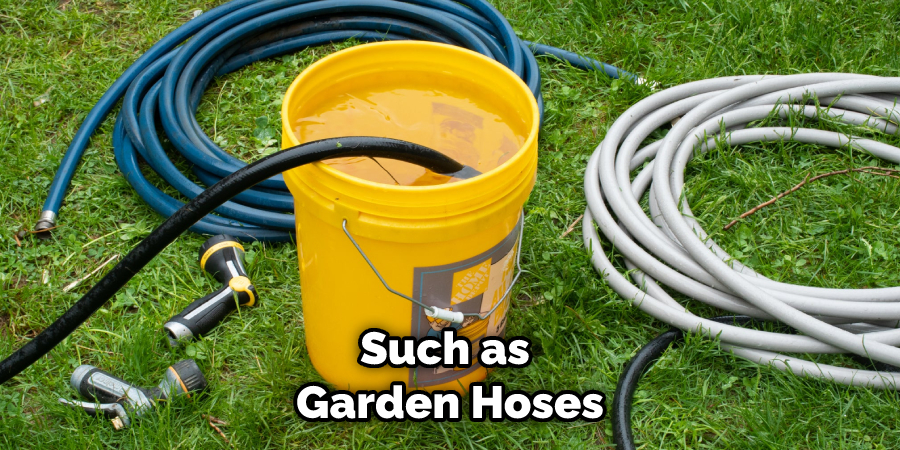
Taking up the project yourself can save you money, but it is important to ensure that you are adequately prepared for the task before beginning.
Conclusion
Although you may not need to blow out your inground pool lines every year, it’s still a good idea to know how in case you ever do need to.
By following the steps on how to blow out inground pool lines we outlined above, you should be able to easily and quickly blow out your inground pool lines whenever necessary. Plus, it’s always nice to have that peace of mind knowing that you can take care of this yourself if needed – no professionals required!
About
Outdoor Fixes is a distinguished figure in the world of Diy design, with a decade of expertise creating innovative and sustainable Diy solutions.
His professional focus lies in merging traditional craftsmanship with modern manufacturing techniques,
fostering designs that are both practical and environmentally conscious. As the author of diy,
outdoorfixes delves into the art and science of outdoorfixes-making, inspiring artisans and industry professionals alike.
Education RMIT University
(Melbourne, Australia) Associate Degree in Design (Outdoor Fixes) Focus on sustainable design, industry-driven projects,
and practical craftsmanship. Gained hands-on experience with traditional and digital manufacturing tools, such as CAD and CNC software.
Nottingham Trent University
(United Kingdom) Bachelor’s in outdoorfixes.com and Product Design (Honors) Specialized in product design with a focus on blending creativity with production
techniques. Participated in industry projects, working with companies like John Lewis and Vitsoe to gain real-world insights.
Publications and Impact
In diy, Outdoor Fixes his insights on indoor design processes, materials, and strategies for efficient production.
His writing bridges the gap between artisan knowledge and modern industry needs, making it a must-read for both budding designers and seasoned professionals.

